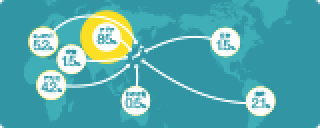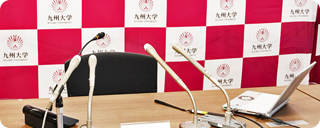研究成果 Research Results
- TOP
- News
- Research Results
- Researchers develop new indicators to detect loneliness risk in remote work
Researchers develop new indicators to detect loneliness risk in remote work
By analyzing workplace chat data, the study examines employees’ online activity and social connectedness, helping organizations detect isolation risks and take timely action.Professor Yutaka Arakawa
Faculty of Information Science and Electrical Engineering
2025.10.15Research ResultsHumanities & Social SciencesTechnology
Fukuoka, Japan—Messages sink without a reply, and mentions disappear from group chats. Small oversights quietly fuel workplace loneliness.
In today’s increasingly digital workplaces, flexible hours and remote work offer freedom and convenience, but also bring risks of developing mental health issues. While subtle cues in face-to-face settings can reveal when employees are struggling, how can organizations detect signs of loneliness online before it’s too late?
A team led by Professor Yutaka Arakawa of Kyushu University’s Faculty of Information Science and Electrical Engineering is looking for clues in our digital footprints—the traces left by everyday online communication. In a recent paper published in the Journal of Information Processing, they analyzed workplace chat data to identify employees potentially at risk of loneliness.
“Digital footprints can actually tell us a lot about people’s internal states,” Arakawa explains. “Office platforms such as Slack provide statistics on channel activity, but they don’t cross-analyze interactions to reveal the patterns between individuals. We wanted to visualize the network of relationships by sensing and analyzing online communication.
”Using data from public Slack channels, Arakawa’s team developed two new indices: contribution level and adjacency level. The former measures how actively someone initiates discussions and replies to messages, and the latter captures how connected one is to others through mentions and reactions.
The team applied the two metrics to their lab’s Slack workspace, analyzing the digital footprints of 48 members and clustering individuals into groups. The results were visualized in a network graph, where each person was represented as a colored dot. Larger dots with many connecting lines indicated individuals who interacted widely across the organization, while smaller dots with fewer connections showed those who might be more isolated.
Fig. 1. Social graph with clustering created from lab members’ digital footprints Each member from the lab appears as a colored dot. Larger dots with many connecting lines indicate individuals who interact widely across the organization, while those with little activity in public channels are shown as isolated users. (Kyushu University)
To see whether this graph mirrored actual feelings, the research team used a widely adopted psychological measure, the UCLA Loneliness Scale. The results showed that members reporting lower levels of loneliness had significantly higher adjacency levels, suggesting a potential link between active online communication and stronger in-person social connections. However, employees who communicate less online do not necessarily feel lonelier.
"One possible reason is that our analysis focused only on public channels, excluding private messages,” Arakawa explains. “Some lab members may rarely post in group chats but maintain active one-on-one communication with their supervisors.”
Recognizing the limits of their sample size, the team is now collaborating with companies to refine the algorithms behind these indicators and broaden their applicability. Meanwhile, Arakawa is partnering with experts in occupational health and policy research as part of a larger research project on social loneliness, funded by the Research Institute of Science and Technology for Society (RISTEX). Besides developing measurable indicators of workplace loneliness, the initiative explores its underlying causes and turns the findings into practical strategies, including prevention and timely interventions.
Arakawa is also working on guidelines for using workplace chat platforms to reduce isolation risks.
"Even a small action, like reacting with an emoji, shows that someone’s message has been acknowledged,” he says. “I hope we can build a society where such gestures of consideration come naturally, even in digital environments.”
###
For more information about this research, see " Visualization of Online Communication and Detection of Lonely Users Using Social Graphs Based on Contribution Level and Adjacency Level," Ryosuke Takizawa, Isshin Nakao, Kensuke Taninaka, Akihisa Takiguchi, Toshiki Hayashida, Shusaku Kita, and Yutaka Arakawa, Journal of Information Processing, https://doi.org/10.2197/ipsjjip.33.765
Research-related inquiries
Yutaka Arakawa, Professor
Kyushu University’s Faculty of Information Science and Electrical Engineering
Contact information can also be found in the full release.
- TOP
- News
- Research Results
- Researchers develop new indicators to detect loneliness risk in remote work































